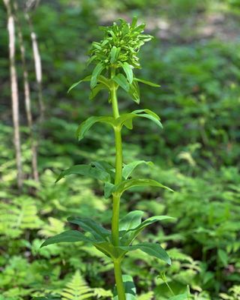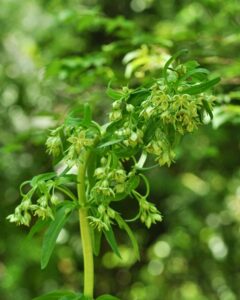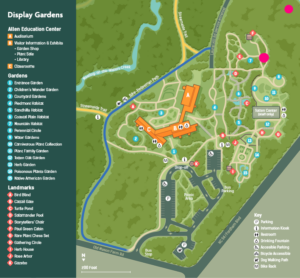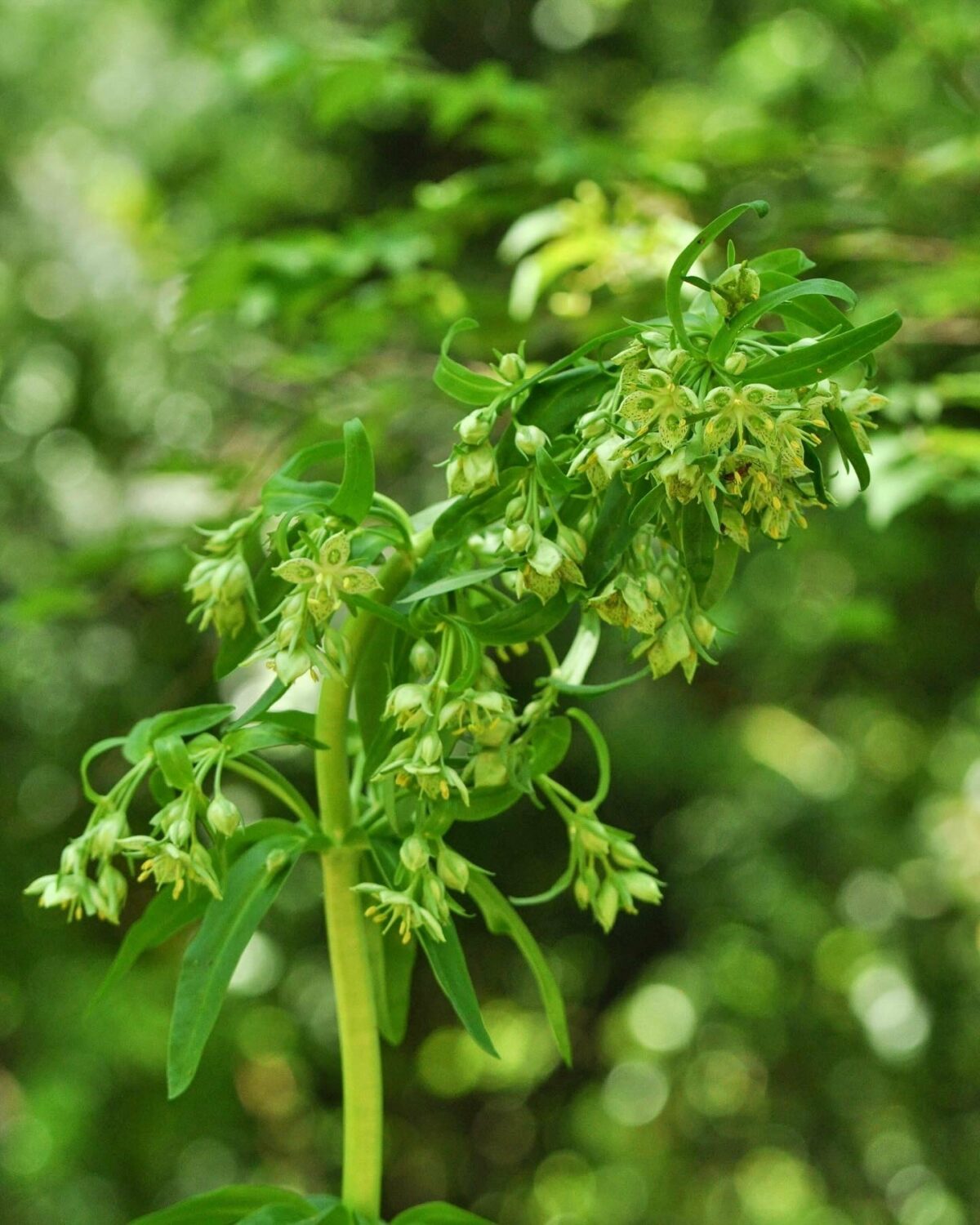Ok, here’s the deal. A few weeks ago, the NC Botanical Garden – who you might remember was the runner up in our March Radness tournament – announced that one of their American columbos was going to flower for the first and only time in 19 years…
And then die.
Since then, we’ve been on columbo watch and pestered the botanical garden with questions.

We have bloom. Repeat, we have bloom.
As of today – May 7- the American columbo is now in bloom. We visited the columbo one week ago, before it had flowered. It looked like this.

Today, it looks like this:

The Botanical Garden reports that she’s a “little floppy, but she’s blooming!)” (Update 5/8: She straightened up overnight!) The columbo in question is between the Paul Green Cabin in the Mountain Habitat area. We have marked where it’s located on the map below, in pink.

We have sent questions to the Botanical Garden about the length of the bloom, and what Chris Liloia, the curator of the habitat gardens, thinks. (In the botanical garden news write-up, she was quoted as saying she had been waiting for this moment since 2005.)
We have been waiting for this moment for just about two weeks, but are no less excited.
Stay tuned for more columbo coverage.
Update: It will bloom for a week, and maybe more. Also here are directions and hours. (It’s free to visit.)
Update 2! We’ve interviewed Emily Oglesby, the Communications and Exhibits Coordinator for the North Carolina Botanical Garden. Her answers are below.
Tell us about the American Columbo.
American columbo (Frasera caroliniensis) is an unusual wildflower that’s native to parts of the eastern and central U.S., including the mountains of North Carolina. Each individual blooms only once in its life, and it can spend 30 years (though it’s more often between 5 and 15) building up the energy to do it. After it blooms (and hopefully gets pollinated and creates seeds that will form the next generation of columbos), it dies.
For the first time ever, we have one blooming at the North Carolina Botanical Garden! It was grown from seed collected from the home garden of NCBG’s first director in 1993. We don’t know the exact year it was grown up into a plant, but Chris Liloia, our habitat gardens curator, planted this one and a few others in 2005. So it’s at least 19 years old, and maybe more!
How long will it be in bloom?
We’re not entirely sure: this is a new experience for us here at the Garden! American columbos typically bloom for three weeks, so we’re hoping it’ll go for another week or two.
How can people see it?
Our American columbo is in our Mountain Habitat. Here’s a map showing its exact location! For those familiar with the Garden, it’s on the way to the Paul Green Cabin.
What does Chris Liloia think?
I asked Chris directly!
“What I think is that it’s fantastic!
Ever since this all began, the first thing I do in the morning is go check on it. This Monday morning, the anticipation really helped me get out of bed. I’ve never actually seen this species bloom before, so the incremental progress has been interesting. Also, slower than I expected. Today (May 8) is the first day that it’s finally upright and giving an indication of what it’s going to look like in full bloom.
I love that it’s coinciding with the periodic cicadas. We have our expectations of what the plants and animals will get up to and then they do something completely different. This is my kind of drama.”
Anything to add?
Plants are beautiful, and they’re also weird little guys that eat bugs or dress themselves up as rotting meat or live exclusively off of fungi or take 20 years to bloom. We hope this American columbo reminds people of how cool and bizarre and delightful native plants can be.

